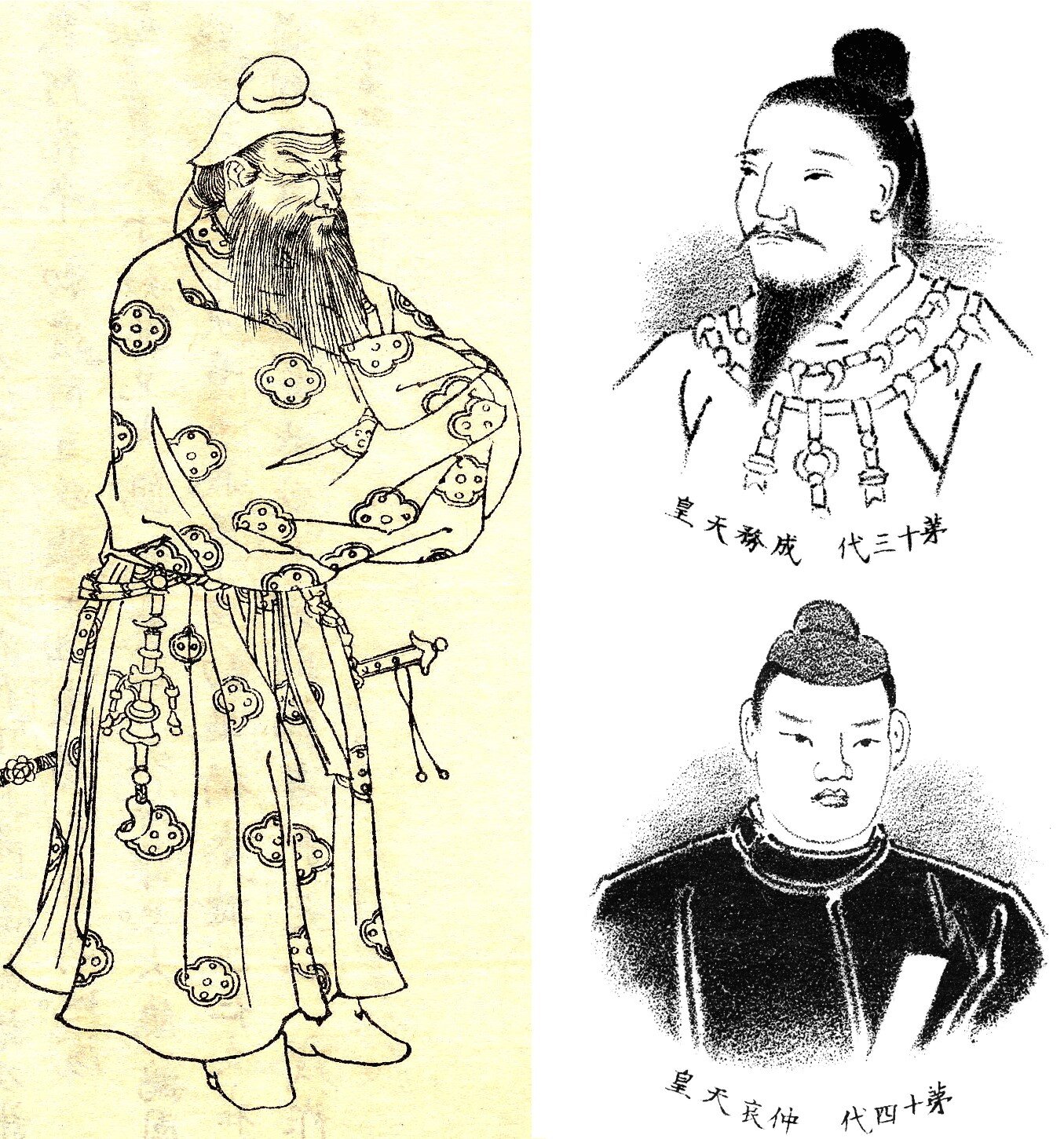Counter clockwise from upper right: Waka Tarashi Hiko, Tarashi Naka tsu Hiko, and Takechi Sukune (sometimes Takeshi-uchi Sukune). Of course, these are all conjectural images, and not based on any historical or even archaeological evidence.
Previous Episodes
- December 2025
- November 2025
- October 2025
- September 2025
- August 2025
- July 2025
- June 2025
- May 2025
- April 2025
- March 2025
- February 2025
- January 2025
- December 2024
- November 2024
- October 2024
- September 2024
- August 2024
- July 2024
- June 2024
- May 2024
- April 2024
- March 2024
- February 2024
- January 2024
- December 2023
- November 2023
- October 2023
- September 2023
- August 2023
- July 2023
- June 2023
- May 2023
- April 2023
- March 2023
- February 2023
- January 2023
- December 2022
- November 2022
- October 2022
- September 2022
- August 2022
- July 2022
- June 2022
- May 2022
- April 2022
- March 2022
- February 2022
- January 2022
- December 2021
- November 2021
- October 2021
- September 2021
- August 2021
- July 2021
- June 2021
- May 2021
- April 2021
- March 2021
- February 2021
- January 2021
- December 2020
- November 2020
- October 2020
- September 2020
- August 2020
- July 2020
- June 2020
- May 2020
- April 2020
- March 2020
- February 2020
- January 2020
- December 2019
- November 2019
- October 2019
- September 2019
So this episode we actually cover at least three different individuals and get introduced to a fourth.
Waka Tarashi Hiko
The 13th sovereign has perhaps the fewest lines of anyone in this episode as far as the Chronicles go. However, he’s something of a spur on the tree of the royal family, as he passes the throne not to his own son, but to his nephew.
Tarashi Naka tsu Hiko
The middle of three brothers (and a sister), Tarashi Naka tsu Hiko, son of Yamato Takeru and nephew of Waka Tarashi Hiko, was named Crown Prince and became the 14th sovereign.
Takechi Sukune
Also known as Takeshiuchi Sukune was the Prime Minister, or Ōmi (大臣) from the time of the 12th sovereign, Ō Tarashi Hiko, and would continue in the position for at least four reigns.
Okinaga Tarashi Hime
Technically, we will hear more about her in future episodes. She was the wife of Tarashi Naka tsu Hiko, at least according to the chronicles, and a shamaness of some power. And that may be the most we want to say at this point. After all… spoilers.
There are a few other things that we might be able to say, but I think I’m going to save most of it for a later episode. Next time the plan is to go back to the continent and try to come up to speed on just what has been going on over on the peninsula.
References
Ō, Yasumaro, & Heldt, G. (2014). The Kojiki: An account of ancient matters. ISBN978-0-231-16389-7
Bentley, John. (2006). The Authenticity of Sendai Kuji Hongi: a New Examination of Texts, with a Translation and Commentary. ISBN-90-04-152253
Chamberlain, B. H. (1981). The Kojiki: Records of ancient matters. Rutland, Vt: C.E. Tuttle Co. ISBN4-8053-0794-3
Aston, W. G. (1972). Nihongi, chronicles of Japan from the earliest times to A.D. 697. London: Allen & Unwin. ISBN0-80480984-4
Philippi, D. L. (1968). Kojiki. Princeton, N.J.: Princeton University Press. ISBN4-13-087004-1

